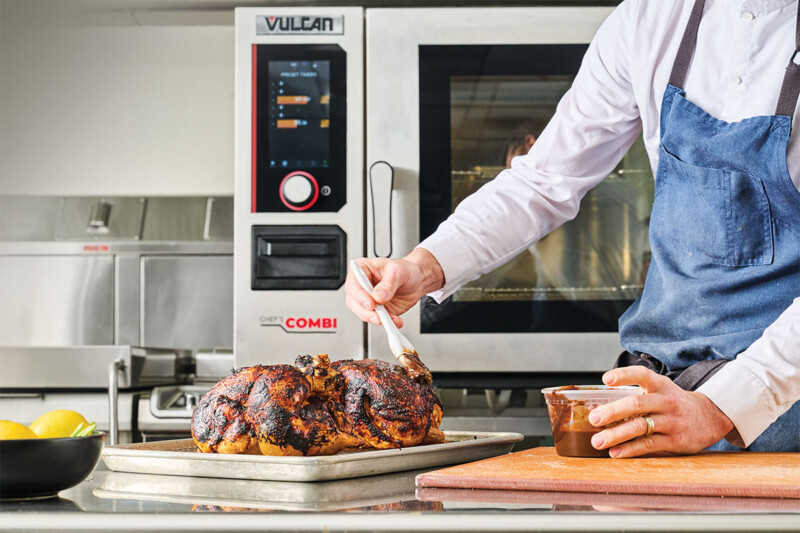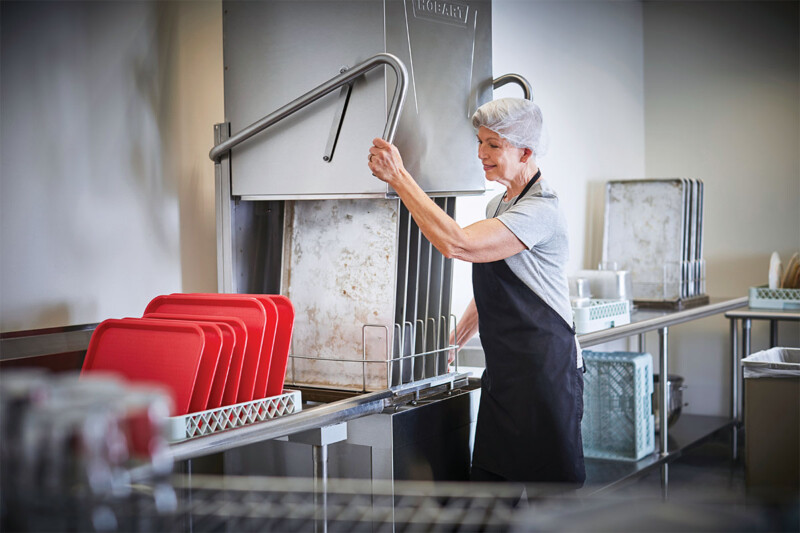SPONSORED CONTENT

FAQs: Retrofitting Existing Commercial Kitchen Ventilation Systems
The restaurant industry sees frequent innovation and adaptation making it a common occurrence for a new restaurant concept to launch from an existing commercial space. The commercial kitchen and ventilation system in this space needs to be properly assessed and adapted according to the new concept’s expectations, along with following any local or state code mandates. When beginning this assessment, we recommend diving into the following common questions to ensure the kitchen ventilation equipment meets the needs of the new concept.
Can the existing hood be reused?
There are numerous factors that determine if the existing exhaust hood can be used for a new restaurant concept. Start by determining if the hood is UL listed and meets code standards, and then if it has been modified from the manufacturer’s originally provided equipment. It is possible that the original ventilation system was designed around standards that are now outdated, requiring it to be updated to meet current code requirements.
If the hood meets current code standards and is approved by the AHJ, then the hood may be able to be reused. Generally, a UL 710 listed hood will ease code concerns because the hood is certified to capture a specific airflow value under the appropriate conditions. To further verify if a hood may be reused, one must be able to maintain compliance with the UL listing with the new cooking equipment. This means that the airflow sizing and duty type of the new equipment under the hood needs to meet the requirements that are listed on the UL label. These factors ensure the hood can efficiently perform its function of capturing heat and effluent. You also want to make sure the hood has the necessary clearance to combustibles. Assess if there are combustible structures such as wood studs or beams that require the hood to be insulated for zero-clearance on any given side. There is a good chance the fire suppression system will also require changes.
Can the existing exhaust fan be used?
The age and condition of the exhaust fan must be assessed by an HVAC professional. This type of review can often be done by a local HVAC service company, mechanical contractor or mechanical engineer. They can review the existing fan and ductwork configuration as well as the new airflow rates required and determine what changes, if any, may need to be made to the fan. While exhaust fans are a small part of the overall cost of the ventilation system, it is one of the most critical components of keeping the kitchen operational. Much like the exhaust hood, begin by determining if the fan meets code standards. This applies not only to the listing of the fan itself (UL 762 for grease exhaust) but also its clearance to the rooftop and the distance from the fan to other buildings and openings in the space. Additionally, you want to make sure that the fan can handle the airflow that you need for the new cooking equipment and the requirements of the hood’s UL listing. Typically, this entails talking with the original manufacturer to determine if the fan and motor have the capacity for the airflow you need.
What are the restrictions for where the hood can exhaust to?
Fans can exhaust to a variety of places, but different codes apply for clearances and access to the equipment based on its placement. These requirements dictate the distance to any roof or ground surface, parapet walls, outside air intake, and adjacent building. Common parameters exist for each of these requirements, but city-specific codes may differ from what is considered normal. In addition to local requirements, NFPA 96 dictates specifics for clearance, grade levels and more for exhaust outlets.
Is it safe to use an existing grease duct?
Inspecting the grease duct fully is crucial in ensuring a safe environment for everyone, as grease duct typically runs throughout a large part of the building. The older the grease duct is, the higher the likelihood that there is grease buildup, prior damage, and potential leaks. The duct also must be reviewed to ensure that it is appropriately sized to meet the airflow needs of the new cooking operation.
An ideal grease duct system is one constructed from steel that is damage free, liquid tight, has access ports for cleanout, and sloped when horizontal to ensure proper grease drainage. If a professional inspects the existing duct and indicates that it meets all these criteria, then it is safe to use.
Similar to the exhaust fan, you want to verify that the grease duct is sized to handle the airflow that you need for the new cooking equipment and the requirements of the hood’s UL listing. Best practice designs for a velocity of 1500 – 1800 fpm through the duct when the exhaust fan is running at design airflow. Velocity can be calculated by taking the airflow rate divided by the cross-sectional area of the ductwork. Given the airflow you are designing for with the new equipment, and the existing ductwork size, if the velocity falls outside of the range mentioned, you may want to consider a new grease duct system.
Lastly, you want to assess the materials that are within 18” of the grease duct. If there are any combustible materials in close proximity, you will need to ensure the duct is properly fire-wrapped or rated for clearance to that material or otherwise re-route the duct so that it is located no closer than 18” to the material in question.
Is it necessary to invest in a tempered make-up air unit?
The need for and/or type of make-up air (MUA) tempering depends on the climate where the concept is located. Typically, any restaurant location that experiences temperatures below 55 degrees Fahrenheit will require a heated make-up air unit. In most scenarios, the initial cost of adding heating to a make-up air unit is minimal and worth the investment.
The decision to adapt to a make-up air unit with cooling capabilities relies on the comfort level desired for the space. It is important to factor in the code requirement that fresh air entering the kitchen must be within 10 degrees of the temperature in the kitchen unless the HVAC system can handle the additional load of an untempered make-up air unit. While untempered air is allowed in some circumstances, in general when the climate exceeds 75 degrees Fahrenheit, the temperature in the kitchen will start to negatively impact the staff and potentially the patrons depending on where the kitchen is located. Investing in a tempered MUA unit is worth consideration to ensure adequate comfort for all.
For personalized guidance in adapting an existing commercial kitchen ventilation system to fit a new restaurant’s ventilation needs, reach out to our team of experts. Our team is dedicated to finding the most effective ventilation solution that aligns with your goals – to get you up and running quickly and keep your staff and guests safe and comfortable.
Learn more here and connect with an Accurex expert for personalized guidance in adapting existing commercial kitchen ventilation systems.
At Accurex®, we believe there is a better way to help simplify the most challenging kitchen ventilation system environments, from specifications to installation to aftermarket support. As a Greenheck Group company, we have more than 70 years of manufacturing and engineering experience in air movement, conditioning, and control products, and offer a breadth of configurable products and services tailored to meet your needs.
RELATED CONTENT
- Advertisement -
- Advertisement -
- Advertisement -
- Advertisement -
TRENDING NOW
- Advertisement -
- Advertisement -


